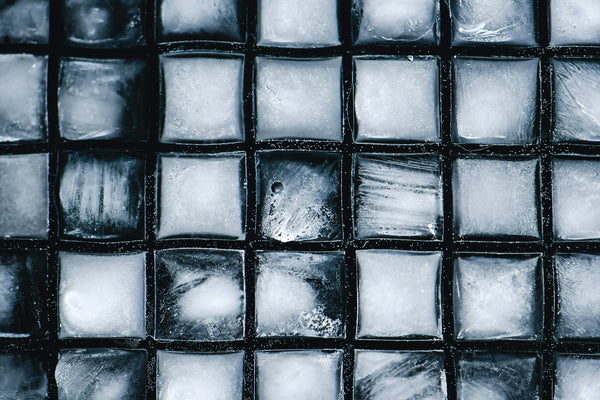Should You Blanch Basil For Pesto?

Blanching basil retains the herb's vibrant green colour for longer and helps reduce the speed of oxidation, which is responsible for an unappealing grey or brown tinge. However, the process can cause an unwelcome loss in freshness and aroma, meaning we only recommend blanching basil if you plan to keep your pesto for 24 hours or more.
The number one rule of pesto is...
Don't cook it. The number two rule of pesto is DON'T COOK IT. It's a proudly raw sauce, so why do people insist on blanching basil before incorporating it into their pesto?
The arguments for blanching basil
We know that blanching delicate herbs like basil before using them in pesto helps the resulting sauce. One thing we know for sure is that blanching delicate herbs like basil before using them in pesto helps the resulting sauce stay greener for longer. That avoids the unfortunate situation of your pesto turning brown between the time of making it and the time of serving it.
How does blanching basil work?
Like all herbs, basil contains polyphenols, a family of micronutrients that occur naturally in plants. These substances react with compounds in the plant cells to produce brown pigments. That happens at an accelerated speed when the plant cells are damaged and then encounter oxygen. Blanching is an effective way to destroy many of the decomposing enzymes that are responsible for this browning.
The case for blanching basil
Busy lives and busy kitchens mean it's not always possible to make your homemade pesto immediately before eating.
Busy lives and busy kitchens mean it's not always possible to make your homemade pesto immediately before eating. If you need to make pesto before a dinner party or if you're planning to make a big batch to last for several days, you should consider blanching your basil. Indeed, blanching the herb will momentarily start "cooking" it, stripping it of some freshness and muting its aromatic flavour slightly. However, provided you blanch the leaves for no more than 15 seconds and immediately shock them in an ice bath to stop the cooking process, the decline in freshness will be negligible at best and undetectable by most eaters.

Any loss in freshness is a relatively small price for not serving your diners an unappealing plate of pasta with a brown sauce that disappoints past its best.
Don't tell our Italian friends, but there's a cheat's way to add freshness back at the last minute, even if the herbs have started to oxidise. Simply stir a little fresh lemon juice through the sauce, and the added acidity will make it taste noticeably fresher.

The case against blanching basil
First, blanching basil (or any green herbs or vegetables) is a bit of a faff. Admittedly, it takes little more than minutes from start to finish, but who realistically has the time?
Pesto is designed to be eaten raw, and nothing can be fresher than stripping leaves from a living basil plant immediately before turning them into pesto. Even if you blanch herbs for a few seconds and transfer them to an ice bath, you will have started the cooking process and must, therefore, resign yourself to serving a sauce that cannot possibly boast the same freshness as its raw counterpart.
Ultimately, no matter what tips and tricks you employ to keep your pesto fresher for longer, you will always find that your sauce will start reducing in vibrancy and freshness as soon as it is made, and that will happen whether you blanch your herbs or not.
Do you still want to blanch your basil? Here's how.
Bring a large saucepan of water to a rolling boil, and make an ice bath big enough and cold enough to ensure that it doesn't rise in temperature too much when you plunge the hot basil leaves into it.
Strip your basil leaves from their stems (ideally working with a live plant and only selecting the smallest, sweetest leaves) and add them to the boiling water in batches. Using a slotted spoon, make sure the leaves remain under the water and don't spend their time floating on the surface, which is naturally what they will want to do.

When fifteen seconds are up, scoop out the leaves, suspend them over the saucepan to drain for a second or two, and then plunge them into your ice bath. Again, keep them under the surface to cool them as fast as possible.
Bring your saucepan back to a rolling boil and repeat until all your basil has been blanched. Once all the leaves are cooled to room temperature or below, remove them from the ice bath, gently squeeze with your hands to remove excess water, and pat them dry with some kitchen roll.
Bonus tips and tricks
If you're a culinary geek and want to extend your sauce's vibrant life, then you can add a small amount of sodium bisulfite or ascorbic acid to your pesto. This will help preserve its fresh taste and colour for even longer, although we must admit that we're not fans of adding perfectly safe but slightly scary-sounding ingredients to our dinner.
As much as we adore basil, it's incredibly delicate, which makes it a real pain to work with. Sometimes, it feels like we only have to look at it, and it will start wilting. It's, therefore, vital that you handle it with kid gloves and always use a razor-sharp knife when cutting it to avoid excess bruising, which can speed up the rate of oxidation.
Whether you are blanching your basil or not, pesto always tastes better when made with a pestle and mortar. Food processors simply slice ingredients thinner and thinner. At the same time, the pounding and crushing motion of a pestle and mortar produces far more flavourful aromatic oils and results in a noticeably tastier result.
Finally, there is one other magic yet ubiquitous ingredient you have in your armoury, and that's oil. Remember that we're blanching basil to reduce the negative impact of oxidation? Well, when you store any leftover pesto, make sure to add a thin layer of oil to the top of it. This will ensure oxygen cannot reach the herbs, and you will dramatically slow down the time it takes for your pesto to turn brown.
Freshly made pesto lasts in the fridge for five days, but by this point, its quality will be noticeably worse, so we recommend eating it within 24 hours.
